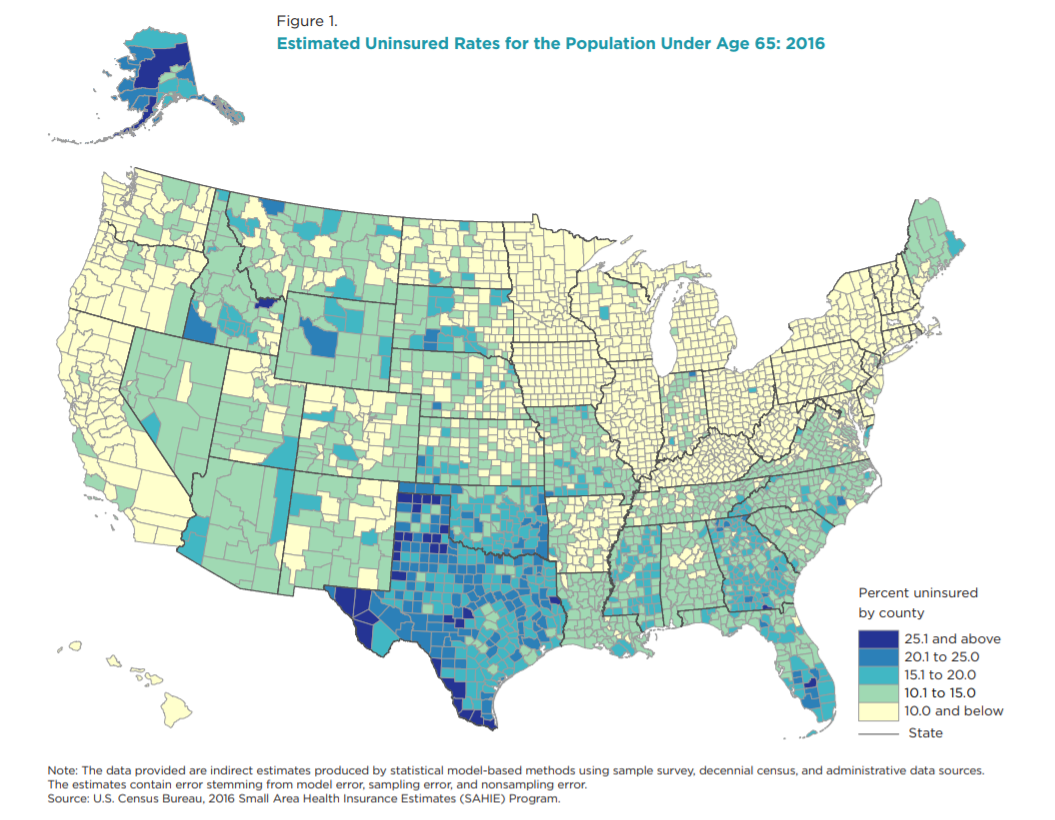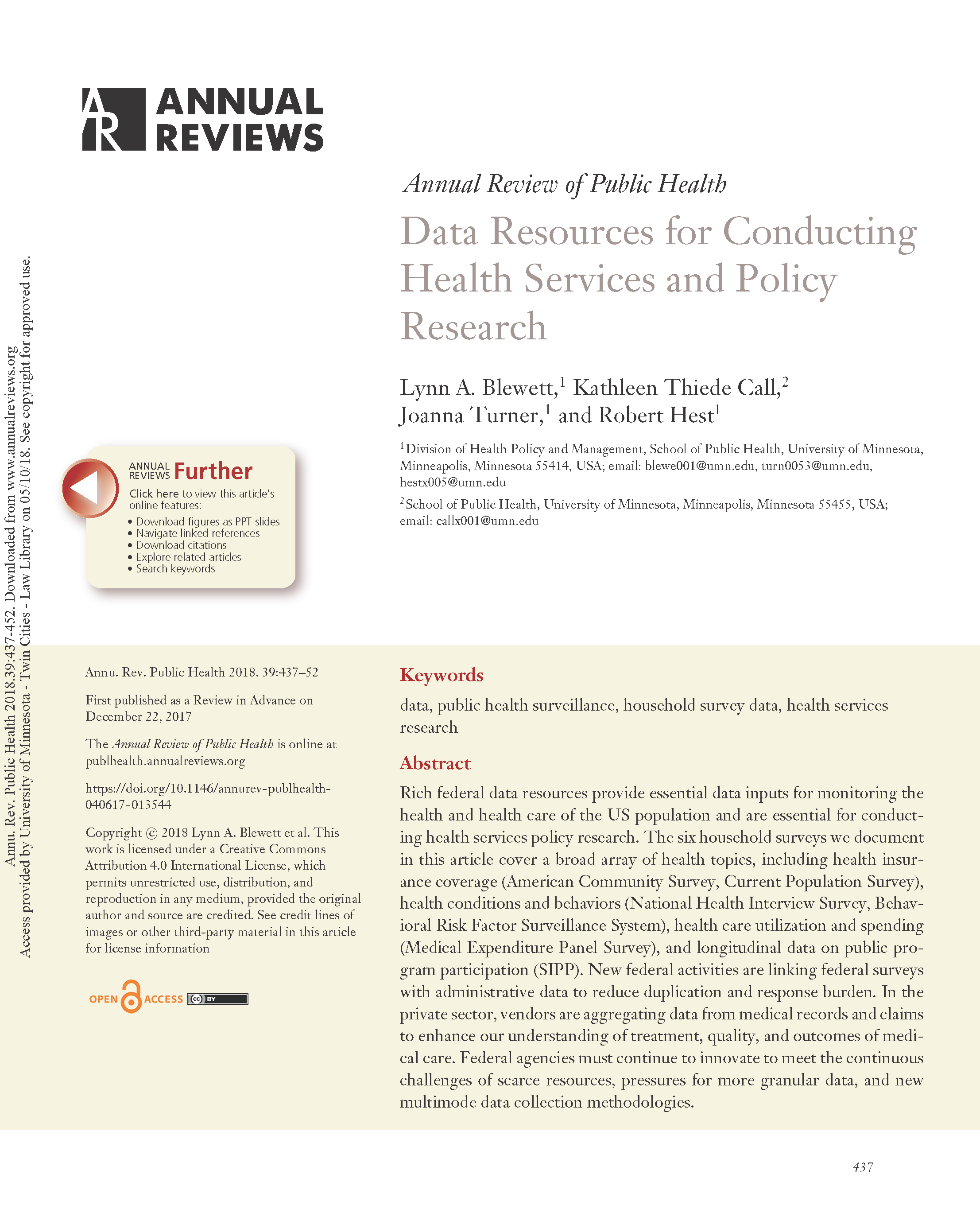Blog & News
Now Available on State Health Compare: Updated Data on Five Measures of Social Determinants of Health and Three Measures of Youth Health Behaviors
August 01, 2018:SHADAC has updated eight measures in State Health Compare. The updated measures include:
- Unemployment Rate
This measure is now available for all states from 2000 through 2017. - Smoke-Free Campuses
The measure is an indication of whether a state has enacted laws to ensure smoke-free campuses and can be broken down by type of school campus—i.e., public vs. private and k-12 vs. college. This measure is now available for all states from 2000 through 2017. - Cigarette Tax Rates
This measure indicates the rate of state excise tax per pack of cigarettes and is now available for all states from 2000 through 2016. - Public Health Funding
This measure captures per-capita state-provided public health funding in each state and is now available for all states from 2005 through 2016. Read SHADAC’s recent issue brief on this measure. - Child Vaccinations
This measure indicates the percent of children ages 19-35 months who received all recommended vaccines and is now available for all states from 2000 through 2016. - High School Obesity
This measure indicates the prevalence of obesity (>95th percentile for BMI) among high school students. It is now available for all states from 2001 through 2017. - High School Smoking
This measure indicates the percent of high school students who smoked at least one cigarette in the past 30 days. It is now available for all states from 2001 through 2017. - High School Physical Activity
This measure indicates the percent of high school students who did not meet the recommendations for 60 minutes of physical activity per day in five of the last seven days. It is now available for all states from 2001 through 2017.
Explore these updated estimates on State Health Compare.
Data Sources
The State Health Compare estimates for unemployment rates come from the Bureau of Labor Statistics; the smoke free campuses and state cigarette tax rates come from the Centers for Disease Control’s (CDC) State Tobacco Activities Tracking and Evaluation (STATE) System; the public health funding measure comes from Trust for America’s Health; the child vaccinations measure comes from the CDC’s National Immunization Survey; and the measures of high school obesity, smoking, and physical activity come from the CDC’s Youth Risk Behavior Surveillance System (YRBSS).
Blog & News
2016 County Health Insurance Estimates Now Available
March 2018:The U.S. Census Bureau released Small Area Health Insurance Estimates (SAHIE) for 2016, providing estimates of health insurance coverage for all counties and states.
The SAHIE program is the only source of single-year health insurance estimates for every county in the US. Estimates are available for each county by sex, age, and Federal Poverty Level (FPL). Race/ethnicity information is available at the state level.
The following are highlights from the 2016 SAHIE release.
 Nationwide, county uninsured rates for the nonelderly population (i.e., under age 65) ranged from 2.1% to 33.5% in 2016, with a median county uninsured rate of 10.4%
Nationwide, county uninsured rates for the nonelderly population (i.e., under age 65) ranged from 2.1% to 33.5% in 2016, with a median county uninsured rate of 10.4%- In 1,213 counties, (38.6% of all counties), the 2016 nonelderly uninsured rate was at or below 10%. Only 425 counties (13.5 %) had uninsured rates greater than or equal to 15.0% (Figure 1).
- Alaska, Georgia, Louisiana, Mississippi, North Carolina, South Carolina, Tennessee and Texas all had counties with 2016 nonelderly uninsurance rates that exceeded 30%.
- The nonelderly uninsured rate decreased between 2015 and 2016 in 629 counties, or 20.0% of all counties. In all, only eight counties experienced an increase in nonelderly uninsured rates from 2015 to 2016.
- In states that expanded Medicaid aimed at low-income working-age adults, 350 counties (23.4% of counties) had a decrease in the uninsured rate for this population compared with 92 (5.6% of counties) in states that did not expand.
Access the full 2016 SAHIE report and visualizations.
Access the 2016 SAHIE estimates.
Find your county’s 2016 uninsured rate using SAHIE’s interactive data tool.
About SAHIE
SAHIE are created using statistical models that combine American Community Survey (ACS) data with population estimates and administrative records.
SAHIE are consistent with the direct ACS survey estimates, but SAHIE are more precise than the ACS 1-year and 5-year survey estimates alone for most counties because SAHIE are supplemented with other data sources.
SHADAC Brief #26 provides an overview of how the SAHIE are developed as well as a comparison of the SAHIE model-based methodology to that used by ACS (see Table 2).
Blog & News
New Brief Examines State Health Compare's Estimates on State Funding for Public Health
March 27, 2018:A new SHADAC brief provides an overview of the most recent estimates for state public health funding on SHADAC's State Health Compare.
About the Estimates
Estimates of per-capita state funding for public health come from data collected by Trust for America's Health, which obtains its calculations using budget documents that are publicly available through state government websites. Based on which information is made available, budget document that are used include: executive budget documents that listed actual expenditures, estimated expenditures, or final appropriates; appropriations bills enacted by the state's legislature; or documents from legislative analysis offices.TFAH defines "public health" broadly to include most state-level health funding with the exception of Medicaid, CHIP, or comparable health coverage programs.
The Big Picture: Wide Variation between States
According to the estimates, there is a wide gap between state public health funding among states, with 2015 state-provided funding ranging from $4 per capita in Nevada to $221 per capita in West Virginia (Figure 1). The national average for 2015 was $44 per capita, and the median was $34 per capita.
Top States for State Public Health Funding
Seven states occupied the top five state public health fundingn spots over the course of five years, from 2011 through 2015 (the most recent five years for which data are available): Alaska, the District of Columbia, Hawaii, Idaho, New York, North Dakota, and West Virginia (Figure 2).
Bottom States for Public Health Funding
Seven states also occupied the bottom five funding spots over the five-year period (2011 through 2015). Arizona, Indiana, Mississippi, Missouri, Nevada, North Carolina, and Wisconsin moved among the bottom five positions for state-provided public health funding during this time period (Figure 3).
Why the Variation among States on this Measure?
According to Trust for America's Health, comparisons of public health funding levels across states are difficult, because every state allocates and reports its budget in different ways, and states vary widely in the budget details they provide. Non-methodological sources of interstate variation in state public health funding may also include the relative performance of individual state economies (since state public health funding is often cut during economic downturns) as well as the relative tax bases of individual states along with state population counts.
Explore Additional Public Health Data at State Health Compare
Visit State Health Compare to explore national and state-level estimates for the following public heallth indicators:
- Weight Assessment in Schools
- School Nutrition Standards Stronger than USDA
- School Required to Provide Physical Activity
- Smoke Free Campuses
- Cigarette Tax Rates
- Public Health Funding
State Health Compare also features a number of other indicator categories, including: health insurance coverage, cost of care, access to and utilization of care, care quality, health behaviors, health outcomes, and social determinants of health.
Publication
Exploring Public Health Data with State Health Compare: State Funding for Public Health
This SHADAC brief provides an overview of most recent estimates for state public health funding on SHADAC's State Health Compare.
Publication
Data Resources for Conducting Health Services and Policy Research
Blewett, LA, Call, KT, Turner J, & Hest, R. (2017). "Data Resources for Conducting Health Services and Policy Research." Annual Review of Public Health 39: 437-452. doi: 10.1146/annurev-publhealth-040617-013544
This article examines six federal household surveys that provide data inputs for monitoring the health and health care of the U.S. population and that are important for conducting helath services policy research: American Community Survey, Current Population Survey, National Health Interview Survey, Behavioral Risk Factor Surveillance System, Medical Expenditure Panel Survey, and Survey of Income and Program Participation.












